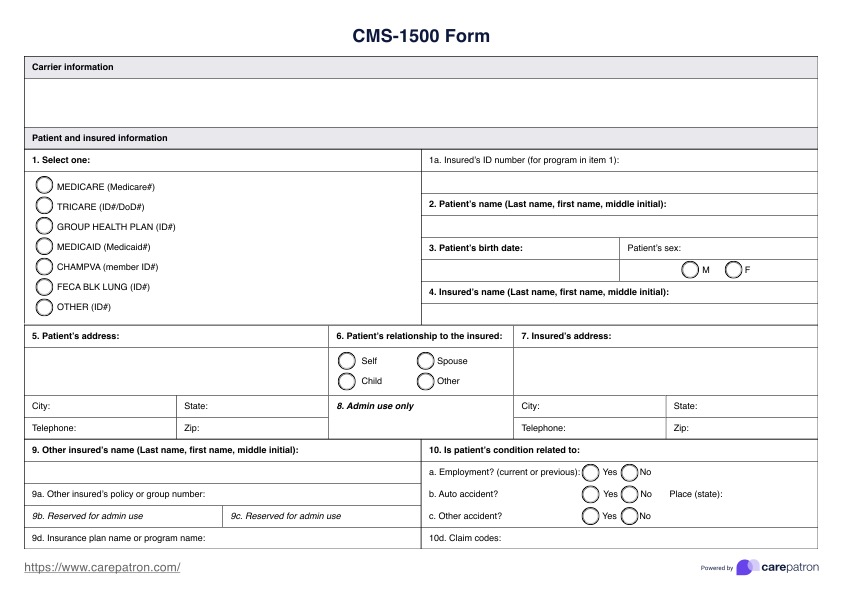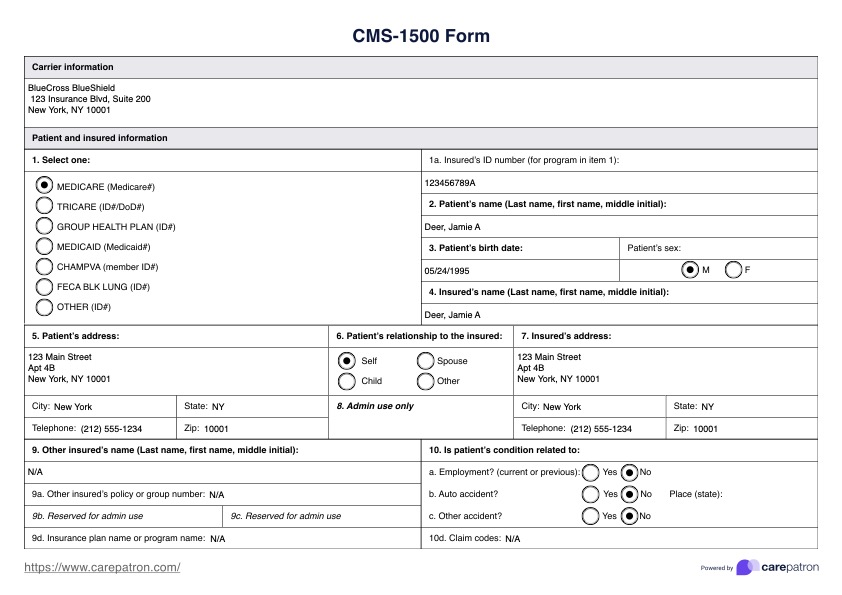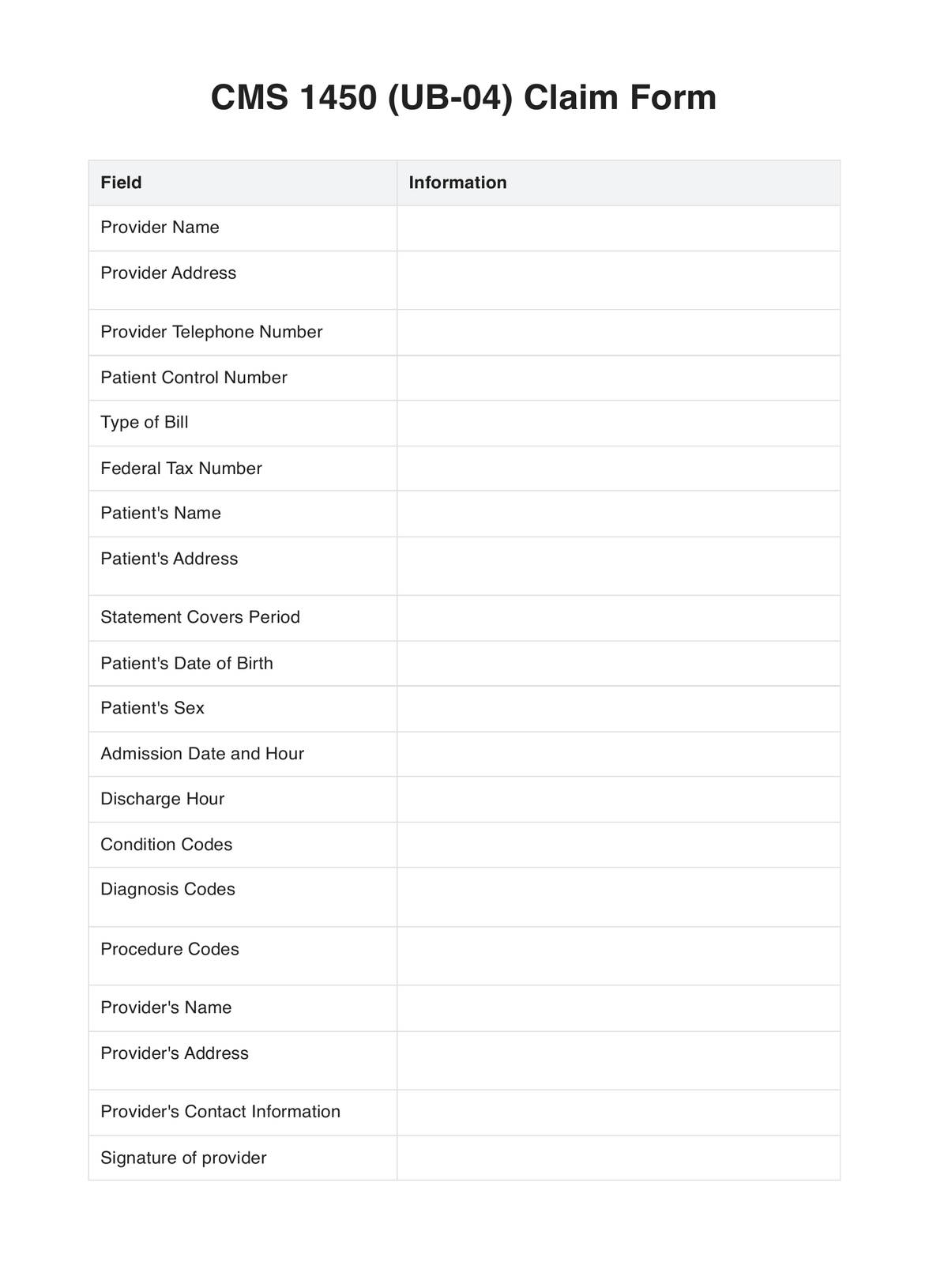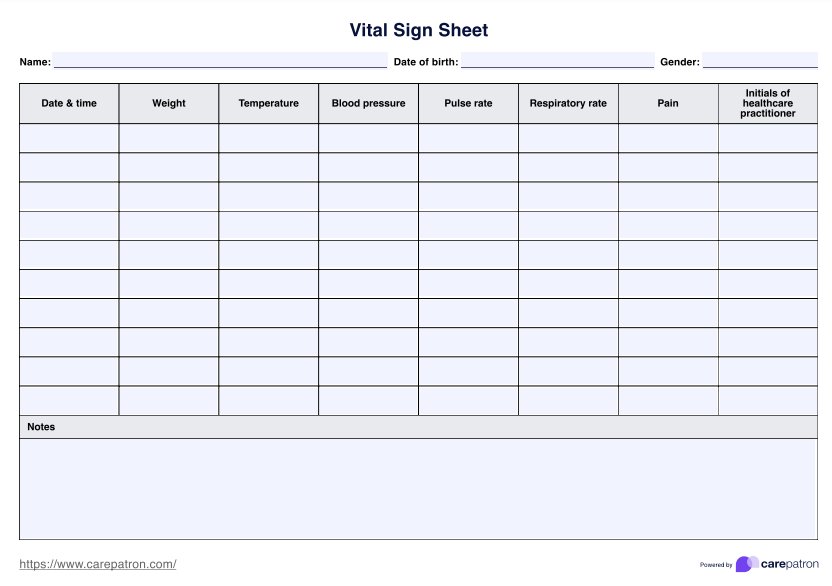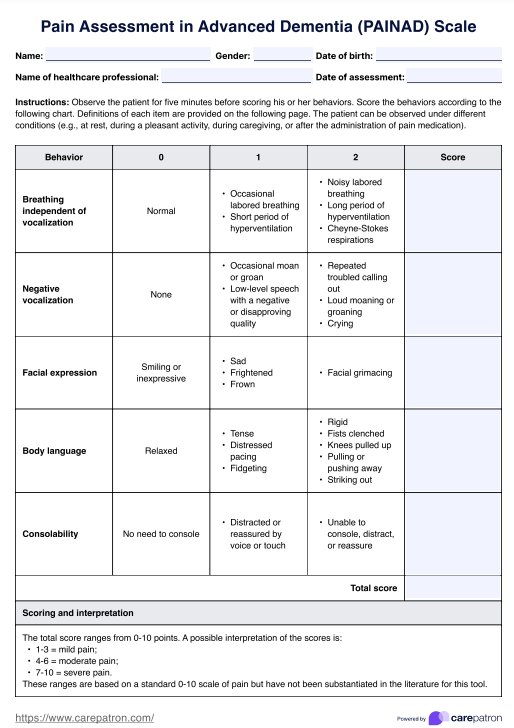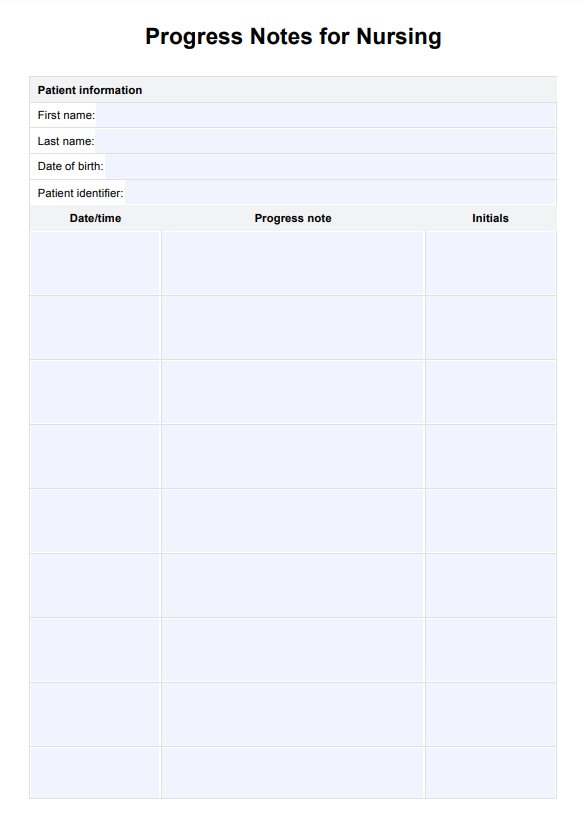CMS 1500 Forms
Access a free CMS-1500 template and a handy guide for accurately and completely filing CMS insurance claims.


What is a CMS-1500 Form?
The CMS 1500 Form is a standardized document used to file insurance claims to the Centers for Medicare and Medicaid Services (CMS) and other health insurers. This form is the industry-standard paper claim form for healthcare providers to seek reimbursement for medical services rendered to beneficiaries of these governmental programs.
This standardized form is designed to comprehensively gather all the necessary information for insurance claims, including patient details, diagnostic, and treatment information. This structured format ensures that all the data required for processing the claim is collected efficiently and consistently, facilitating accurate and timely reimbursement.
Accurate completion of the CMS 1500 Form is vital to medical billing and coding since it's part of the Administrative Simplification Compliance Act. Any errors or omissions can lead to health insurance claim form denials or delays in payment, disrupting the healthcare provider's revenue cycle. As such, it's imperative that healthcare providers complete this form thoroughly and accurately.
CMS 1500 Forms Template
CMS 1500 Forms Example
How does it work?
The CMS-1500 Form allows healthcare providers to claim reimbursements for services provided to patients covered by government health programs. Here are the general steps involved in using and filling out this template:
Step 1: Access the form
Open this free CMS-1500 Form template in the Carepatron app by clicking "Use template." Alternatively, open a ready-to-go PDF version by clicking "Download."
Step 2: Fill out patient and insured information
Fill out fields 1-13, providing the patient's personal and insurance information. The 'insured' is the person covered by the insurance plan. If the patient and the insured are not the same person, (i.e. the patient is covered by another insurance plan), the details of the other insured should be provided in the 'other insured's' fields.
Step 3: Record diagnosis and services renders
The next section of the form requires details about the patient's diagnosis and the treatments provided. This includes the dates of service, the procedures performed, the charges for each service, and the location where the services were provided.
Step 3: Billing information
Next, fill out the provider's information and the charges using fields 24-33. This includes the physician or healthcare provider's name and billing information, their federal tax ID number, and other relevant details related to Medicaid or Medicare carriers. Officials need this information to check if the provider qualifies for the claim being submitted.
Step 4: Narrative submission
A CMS-1500 claim form must be submitted with a detailed medical narrative attachment to be considered a valid submission. The patient’s work status, causal relationship of the injury to the patient's work activities, and temporary impairment percentage are the key elements most narratives must include. The narrative should also describe the history of the injury/illness, objective findings from the clinical evaluation, plan of care and diagnoses. As of August 1, 2025, all providers must partner with a clearinghouse, who ensures that the medical bill and narrative attachment are sent and accepted by the correct payer.
Step 5: Sign and date
After all the information has been entered, carefully review the form to ensure all details are correct and complete. Any errors or omissions can lead to claim denials or delays in payment. Finally, the physician or supplier should provide a signature at the bottom of the form to confirm the details provided are accurate.
When would you use a CMS-1500 Form?
This form is designed for use by non-institutional medical providers who are exempt from the Administrative Simplification Compliance Act (ASCA), which requires electronic submission of claims. After a patient receives medical services, the healthcare provider or supplier (e.g. laboratory or pharmacy) uses the CMS-1500 form to claim reimbursement from the insurer.
In cases where a patient receives ongoing care over multiple visits, the CMS-1500 form is used to submit a claim for cumulative services. The form records details of each visit, the ongoing treatment plan, and the charges accrued, allowing for a comprehensive claim submission. CMS-1500 claim forms are a crucial part of the workers compensation system for smaller providers.
When a patient receives care from multiple providers, each provider completes a separate CMS-1500 Form for their provided services. This ensures that each provider can independently claim for their part of the treatment.
There might be situations where healthcare providers offer services not covered under a patient's private insurance but are covered by government health programs. In such cases, the CMS-1500 Form is used by the non-institutional provider to bill medicare carriers for these services.
Benefits
Utilizing the CMS-1500 Form brings several benefits to healthcare providers seeking reimbursement from Medicare and Medicaid. Here are a few notable advantages:
Standardization
The CMS0-1500 Form provides a standardized format for submitting medical claims. This uniformity simplifies the process, making it easier for providers to fill out the form and for government agencies to process the claims.
Comprehensive information-gathering
This form captures all the necessary information about a patient's treatment. This ensures that all relevant details are documented, which can help avoid claim denials due to missing or incomplete information.
Facilitates record keeping
Using the CMS-1500 Form aids in maintaining consistent and comprehensive patient care records. This can be beneficial for tracking a patient's medical history and potential audits.
Accessibility
This free CMS-1500 Form template can be downloaded and printed, and is designed for straightforward, easy use.
However, while this free CMS 1500 claim form is designed as a standardized, accessible, and printable version of the professional paper claim form, it was not designed by the National Uniform Claim Committee. Therefore, it is not compatible with optical character recognition (OCR) scanners. An ORC standard claim form can only be purchased from the U.S. government printing office.
Commonly asked questions
CMS 1500 forms are used by non-institutional healthcare providers and certain suppliers, such as physicians, nurse practitioners, clinical social workers, and physical therapists, to claim reimbursement for services provided to patients covered by Medicare and Medicaid. They are used only when the provider qualifies for a waiver from the ASCA.
CMS 1500 forms are used whenever a healthcare provider needs to claim reimbursement from Medicare or Medicaid. This includes situations such as after providing medical services, during ongoing care over multiple visits, when multiple providers are involved in a patient's care, or when claiming for services not covered under a patient's private insurance but covered by government health programs.
The CMS 1500 form is filled out with all relevant details, including the patient's personal and insurance information, the diagnosis, and the treatments provided. It is then submitted to Medicare or Medicaid for processing and reimbursement. The form is usually submitted electronically, depending on the requirements of the appropriate payer.
The U.S. Worker's Compensation Board has made the CMS-1500 claim form required for healthcare providers seeking reimbursement for services provided. This is partially to improve provider participation in the workers compensation system. It is also intended to streamline the administrative burden of filing insurance claims and improve the efficiency of paper claims.


